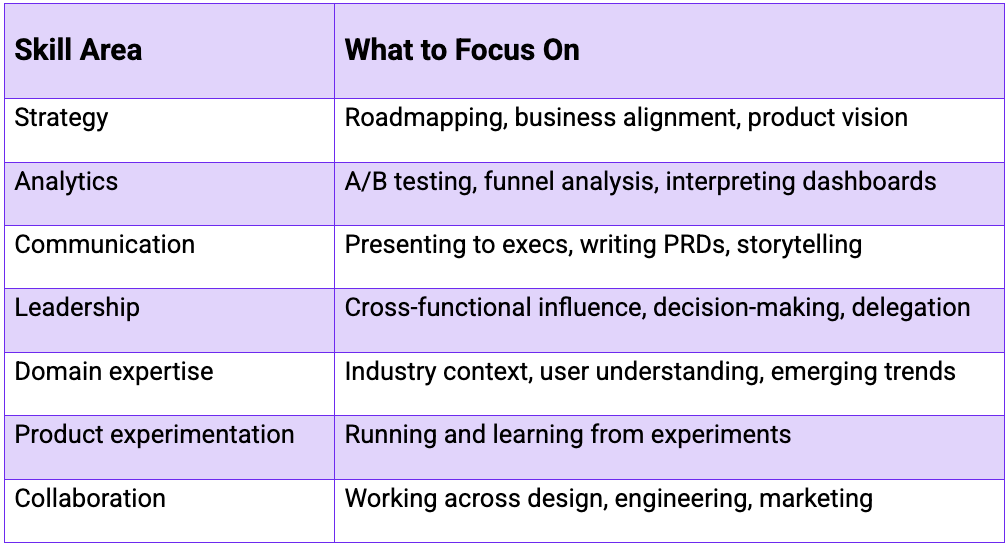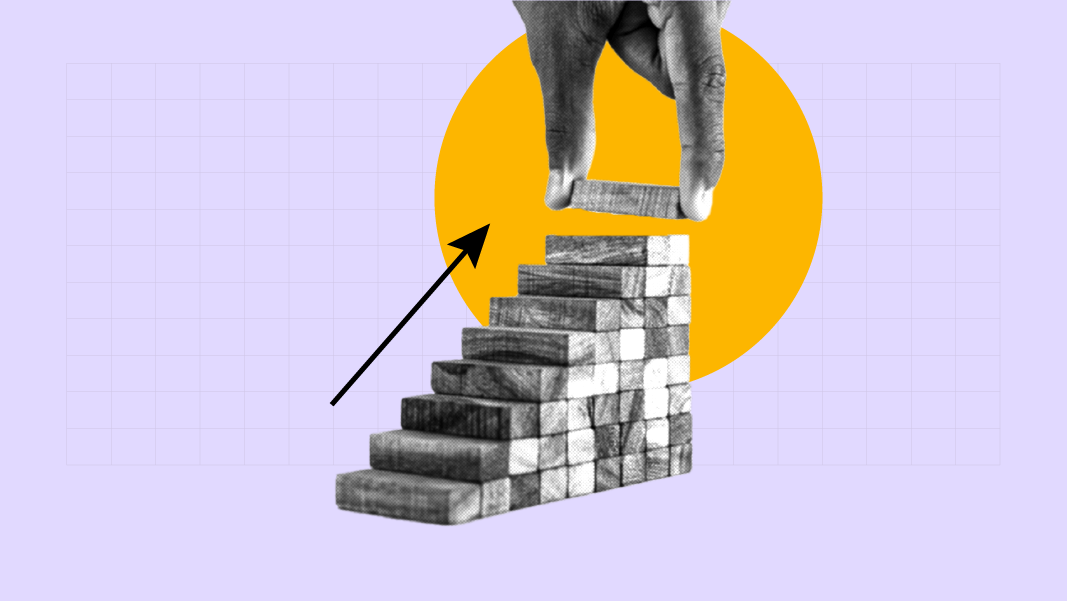Breaking into product management is exciting. But growing into a mid-level or senior role especially one that commands trust, responsibility and better pay requires more than experience. You need strategy, proof of work, visibility and real business impact.
In our recent community event, seasoned product managers from fintech, SaaS, and global markets shared their experiences transitioning into more senior roles in global companies and what helped them stand out.
Upskill with Treford
Join 15,000+ no-code tech professionals like you who use Treford to build skills that move their careers forward.
Don’t Just Ship Features; Drive Strategy and Outcomes
One of the biggest mindset shifts is understanding that senior product managers are not feature factories.
At the mid and senior level, your value isn’t in managing Jira boards or sprint velocity; it’s in owning product direction, setting priorities that move business goals and rallying cross-functional teams around outcomes.
“Our work is measured by impact, not just how many features we launch,” said Princess Akari. “You need to tie your work to revenue, retention or risk reduction.”
To do this well, the panelists mentioned product managers must sharpen their strategic thinking:
- Define clear product vision and strategy
- Align with business goals (e.g. increase conversion, expand to new markets)
- Prioritize ruthlessly using data and user insights
Go beyond the basics to master immersive product strategy, crafted with the expertise of product leaders from high-growth companies. Take our Product Strategy Full Course.
Build Your Product Analytics Skills
If you can’t measure it, you can’t improve it and you certainly can’t defend it in stakeholder meetings.
Senior product managers don’t wait for the data team to interpret insights. They roll up their sleeves and ask the right questions, work with tools like Mixpanel or Amplitude, and measure outcomes beyond vanity metrics.
“Can you confidently say your last product decision improved retention or saved money?” Olamide, one of the panellists, asked. “That’s the difference between a junior product manager and a senior product manager.”
Analytics skills to level up on:
- Understanding funnels and drop-off points
- Setting up and interpreting A/B tests
- Reading dashboards for product performance
- Using tools like Mixpanel, Amplitude, Google Analytics, Looker
Become familiar with various analytics tools and their capabilities to enhance your analytical and data skills. Have a look at the breakdown of these 20 analytics tools and how people are using them.
For structured and hands-on learning that simulates real-world product data for a deeper understanding of product analytics, consider the Product Analytics Live Program by Treford.
Communication and Influence as Core Product Manager Competencies
You can’t move up if you can’t communicate up.
Every panelist echoed this truth: product managers who rise quickly know how to communicate effectively with executives, engineers, and users and adjust their language accordingly.
One of the panelists says, “I’ve met excellent product managers who couldn’t translate technical ideas into business terms, and they were overlooked for promotions.”
Here are indicators of strong product managers:
- Carry their team along with clarity and alignment
- Write clear product briefs that align with business context
- Present confidently to stakeholders
- Simplify complex decisions and data for non-technical leaders
Build Subject Matter Expertise; It Can Set You Apart
A powerful insight shared at the community event is that being deeply knowledgeable about your product space is underrated.
You don’t need to know how to code, but you do need to understand the ecosystem you’re working in. Whether it’s fintech, logistics, healthtech, or AI products, the best product managers own their space.
“There are PMs who wake up and can map out a card infrastructure system from scratch. That’s expertise,” shared one panelist.
Companies prioritise subject matter knowledge over generalist technical knowledge, especially at senior levels.
What are your action points?
- Study your users and build better context than anyone else on your team
- Dive deep into your domain (e.g., payments, lending, B2B SaaS)
- Learn the regulations, terminology, user pain points, and competitors.
Thinking Global? Learn to Package Your Work
Whether you’re aiming for remote roles abroad or applying for the Global Talent Visa, one thing is clear: your storytelling needs to be on point.
Olamide, one of the panelists says, “Most PMs do the work, but they don’t document it in a way that sells. You need to create evidence that tells a story.”
To compete globally, your case studies, LinkedIn, and public presence should show:
- What you worked on
- The role you played
- The business/user impact (ideally with metrics)
- Any public work (articles, talks, community work)
Because it’s not enough to “know your stuff”; people must see your stuff.
For deep insights into positioning as a global talent and landing global product roles, these three product managers across different time zones shared practical steps in our Global Career Series to help get you there.
Skills You Need to Grow from Entry Level to Senior Product Manager
While you have already built core skills needed to excel as a junior product manager, as you look to move your career path, some skills should become a priority to learn.
Here’s a breakdown of core skills discussed during the event: skills you need to focus on building:

How to Take the Step towards Senior Product Management Roles
One of the biggest challenges product managers face while growing is that the job rarely provides space for learning. You’re expected to already know how to build roadmaps, build product strategy, lead product launches, understand metrics, and lead teams.
Since you’ve mastered the basics and now wondering how to step into that senior product management role, here’s the truth:
There’s no perfect moment. No one taps you on the shoulder and says, “You’re ready now.”
You grow into senior roles by:
- Building deeper strategic thinking
- Making decisions tied to real business impact
- Communicating clearly across all levels
- Leading with confidence, even when things feel messy
- Packaging your work in a way that proves your value
But the truth is it’s hard to grow into this version of yourself by chance. You need structure, feedback, and the kind of hands-on learning most roles don’t offer.
That’s why we created the Product Management Accelerator Program at Treford for product managers who are ready to do more than just routine work and start growing intentionally into great global talents.

